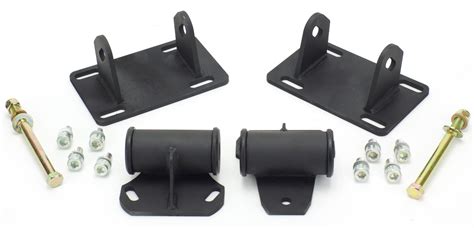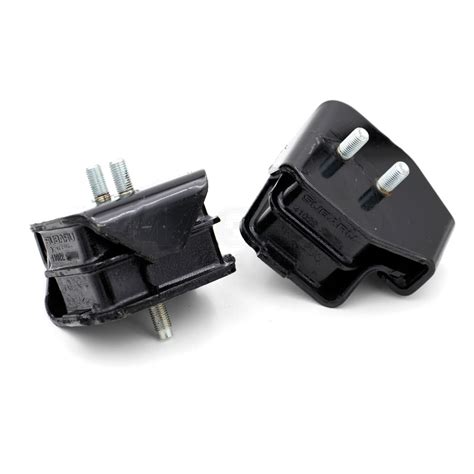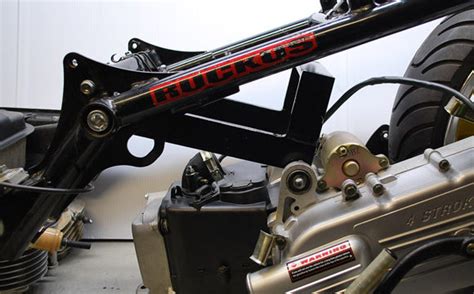Explore engine mounts, their role in stability, factors affecting movement, ideal ranges, and the consequences of improper adjustments for optimal vehicle performance.When it comes to the performance and longevity of your vehicle, the role of engine mounts is often overlooked. These vital components serve as the bridge between the engine and the vehicle chassis, absorbing vibrations and ensuring stability. Understanding how much an engine should move on its mounts is crucial for maintaining optimal functioning. Various factors, such as engine design and driving conditions, can influence engine movement. This blog post will explore the importance of engine stability, the ideal movement range, and the potential repercussions of improper mount adjustments. Whether you’re an avid car enthusiast or just looking to keep your vehicle in top shape, a deeper dive into engine mount dynamics will illuminate why this topic deserves your attention.
Understanding Engine Mounts
Engine mounts play a crucial role in the operation of any vehicle, as they are essential components engineered to secure the engine to the vehicle’s frame while simultaneously dampening vibrations and minimizing noise, thus ensuring a smooth and ultimately enjoyable driving experience.
These mounts must successfully absorb the intense forces generated by the engine during operation, which includes a range of motions such as torque and acceleration, and thus must be constructed from reliable materials such as rubber or polyurethane that can withstand frequent wear and tear, providing the necessary strength and flexibility to accommodate engine movement without compromising stability.
Moreover, the correct setup and alignment of engine mounts can significantly contribute to the overall performance of a vehicle, as improper installation or degraded mounts can lead to excessive engine movement, causing various issues that affect not only the engine itself but also other components such as the transmission and exhaust system, thereby highlighting the incredible importance of understanding what engine mounts are and how they function effectively in maintaining vehicle integrity.
Factors Affecting Engine Movement
The movement of an engine on its mounts can be influenced by a diverse array of factors that play a crucial role in its overall performance, integrity, and functionality, wherein each element has unique implications for the operation and positioning of the engine within the vehicle’s chassis.
One significant factor that affects engine movement is the design and quality of the engine mounts themselves, which are specifically engineered to provide a stable point of reference while simultaneously dampening vibrations and allowing some degree of flexibility; thus, it is essential to choose mounts that are suited for your vehicle’s engine specifications and intended use. Additionally, the material composition of these mounts can greatly influence their ability to absorb shocks and vibrations, as various compounds such as rubber or polyurethane exhibit different levels of damping properties and durability.
Furthermore, engine alignment plays a pivotal role in limiting excessive movement, as improper alignment can lead to increased strain on the mounts, resulting in premature wear or failure over time, stressing the importance of regular checks and adjustments during routine maintenance, and ensuring that all mounting hardware is tightly secured to avoid any unnecessary movement. Factors such as the weight of the engine, the torque generated during operation, and the overall condition of the vehicle’s suspension system must also be taken into account, as they can collectively influence how much the engine shifts, twists, and oscillates while the vehicle is in motion.
Importance of Engine Stability
Engine stability is a crucial aspect of automotive engineering that significantly affects both the performance and longevity of a vehicle; not only does it ensure a smooth driving experience, but it also prevents excessive wear and tear on various mechanical components.
When discussing engine stability, it’s important to recognize that the engine is subjected to various forces during operation, such as vibration and torque, that can lead to unwanted movement; hence, maintaining engine stability through effectively designed and implemented engine mounts is imperative for optimizing the overall functionality of the vehicle.
Moreover, an engine that is properly stabilized minimizes the risk of damage to other critical systems, such as the drivetrain and exhaust, thus enhancing both safety and engine performance, as well as contributing to improved fuel efficiency; therefore, understanding the significance of engine stability is esse
Ideal Engine Movement Range
When it comes to understanding the ideal engine movement range, it’s crucial to recognize that various factors contribute to how an engine operates effectively while mounted in a vehicle.
Typically, the engine movement should not exceed a range where excessive vibrations and misalignment occur, and generally, this range can be quantified as an approximate maximum of 1 to 1.5 inches of horizontal movement and 0.5 to 1 inch of vertical movement under normal conditions.
Maintaining these specifications is vital for ensuring optimal engine performance, as excessive movement can lead to increased stress on other components of the vehicle, particularly the transmission and various fittings, which can ultimately lead to premature wear and the possibility of engine damage over time, thereby making it essential to monitor and adjust the mounts accordingly to stay within the ideal movement range.
In conclusion, by ensuring that the engine movement remains within this ideal range, vehicle owners can promote longevity and reliability, not only for the engine but for the overall vehicle integrity, which includes maintaining a smoother ride and reducing noise levels that are often
Impact of Improper Mount Adjustment
The impact of improper mount adjustment can be quite substantial, as this seemingly minor oversight can lead to a series of consequential issues affecting both engine performance and vehicle safety. When engine mounts are not correctly positioned or tightened, the result can be excessive movement of the engine, which might lead to misalignment of various engine components, creating mechanical strain that could decrease the efficiency of the vehicle.
This misalignment often manifests in negative ways, such as increased vibrations felt through the chassis, which can lead to premature wear on the engine and suspension components, while also compromising the overall driving experience for the occupants inside the vehicle. Not only does this raise the risk of additional repairs and costs, but it can also present serious safety concerns as loose engine assemblies may cause unexpected readjustments during operation or even potential failure of vital connections, making it imperative to frequently check and maintain proper adjustments on engine mounts.
Furthermore, the ramifications of improper mount adjustment can extend beyond just mechanical failures; they can also affect fuel efficiency, as an engine that moves excessively may require more energy to function effectively, thereby leading to higher fuel consumption and an increased carbon footprint. Therefore, ensuring that engine mounts are properly adjusted is essential not only for maintaining the integrity of the engine but also for promoting fuel efficiency, comfort, and safety during vehicle operation.
Frequently Asked Questions
What are engine mounts and their purpose?
Engine mounts are components that secure the engine to the vehicle’s frame or subframe, isolating vibrations and preventing excessive movement during operation.
How much movement is normal for an engine on its mounts?
Typically, a small amount of engine movement is normal, usually around a quarter-inch to half-inch under load, depending on the vehicle and engine size.
What factors can affect engine movement on its mounts?
Factors include the type of engine mounts used, the engine’s design, transmission type, and any aftermarket modifications that may impact the mounting system.
What symptoms indicate that engine mounts may be failing?
Symptoms include excessive engine movement, unusual noises like clunking or banging, increased vibration within the cabin, and misalignment of the engine or transmission.
How can I check if my engine mounts are functioning properly?
You can visually inspect the mounts for cracks or damage, check for excessive movement with the engine running, and listen for unusual noises during acceleration.
What are the consequences of having improper engine movement on mounts?
Improper engine movement can lead to various issues, including increased wear on engine components, misalignment of the transmission, and potential failure of the mounts themselves.
When should I consider replacing my engine mounts?
Consider replacing the engine mounts if you notice excessive movement, cracks or deterioration in the mounts, or if you’re experiencing abnormal vibrations or noises while driving.





